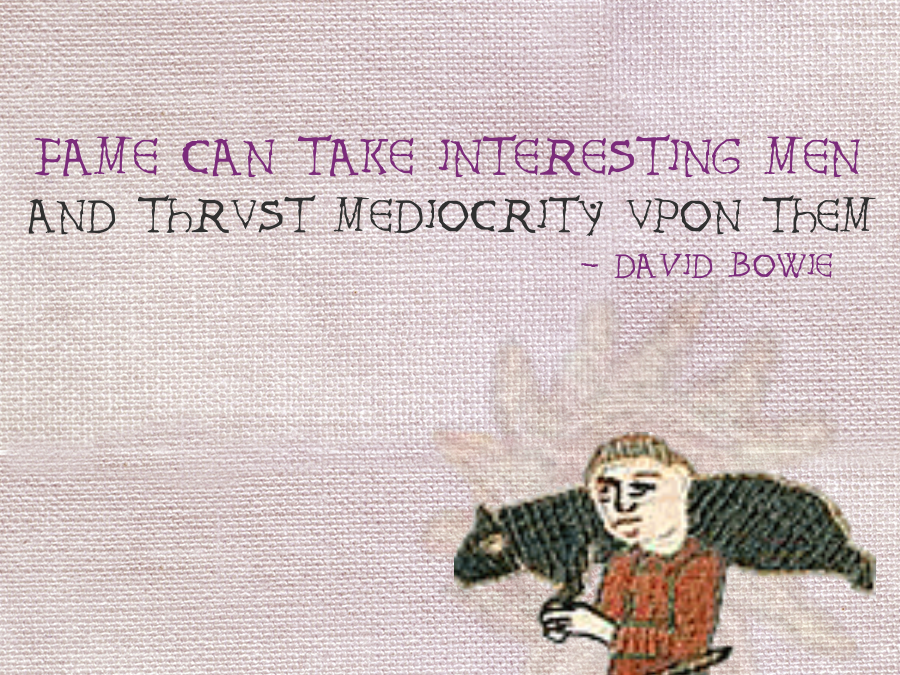
A wise woman once quoth that one man’s adult coloring book is another’s Medieval Tapestry Edit.
If taking crayons to empty outlines of mandalas, floral patterns, and forest and ocean scenes has failed to calm your mind, the Historic Tale Construction Kit may cure what ails you.
Programmers Leonard Allain-Launay and Mathieu Thoretton and software engineer Maria Cosmina Etegan created the online kit as a tribute to a late, great, early 21st-century application designed by Academy of Media Arts Cologne students Björn Karnebogen and Gerd Jungbluth.
They separated out various elements of the Bayeux Tapestry, allowing you to freely mess around with 1000-year-old images of warriors, commoners, beasts, and buildings:
Craft thy own Bayeux Tapestry
Slay mischievous beasts
Rule the kingdom
Choose a background, add some text in your choice of Bayeux or Augusta font and you’ll have done your bit to revive the fading art of the Medieval Macro (or meme.)
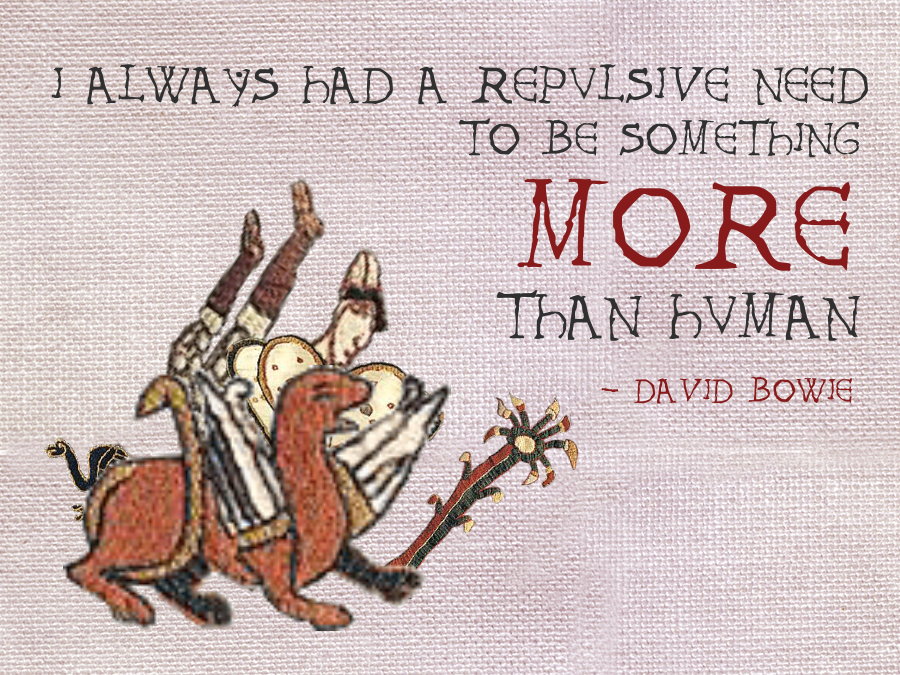
The original tapestry used some 224 feet of wool-embroidered linen to recount the Battle of Hastings and the events leading up to it.
You need not have such lofty aims.
Perhaps test the waters with a Father’s Day greeting, resizing and rotating until you feel ready to export as a PNG.
The interface is extremely user friendly, kind of like a tech-savvy 11th-century cousin of the online drag-and-drop graphic design tool, Canva.
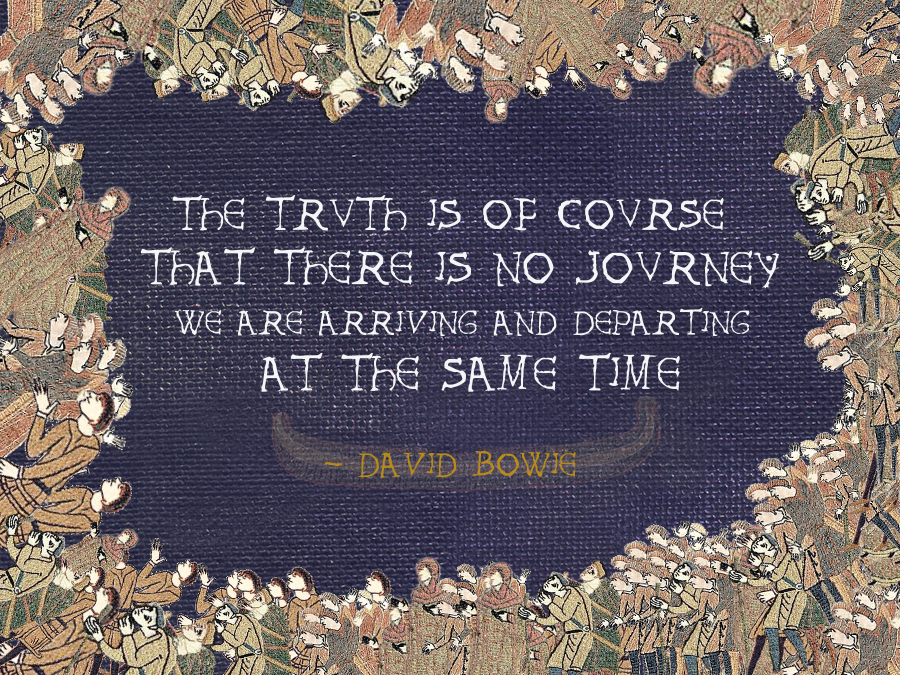
The Historic Tale Construction Kit’s most impressive bells and whistles reside in the paintbrush tool in the lower left corner, which allows you to lay down great swaths of folks, birds, or corpses in a single sweep.
Your palette will be limited to the shades deployed by the Bayeux embroiderers, who obtained their colors from plants—dyer’s woad, madder, and dyer’s rocket (or weld).
The text, of course, is entirely up to you.
It pleased us to go with the eminently quotable David Bowie, and only after we groped our way into the three fledgling efforts you see above did we discover that we’re not the only ones.
Presenting Early Pre-Bowie References to "Space Oddity"
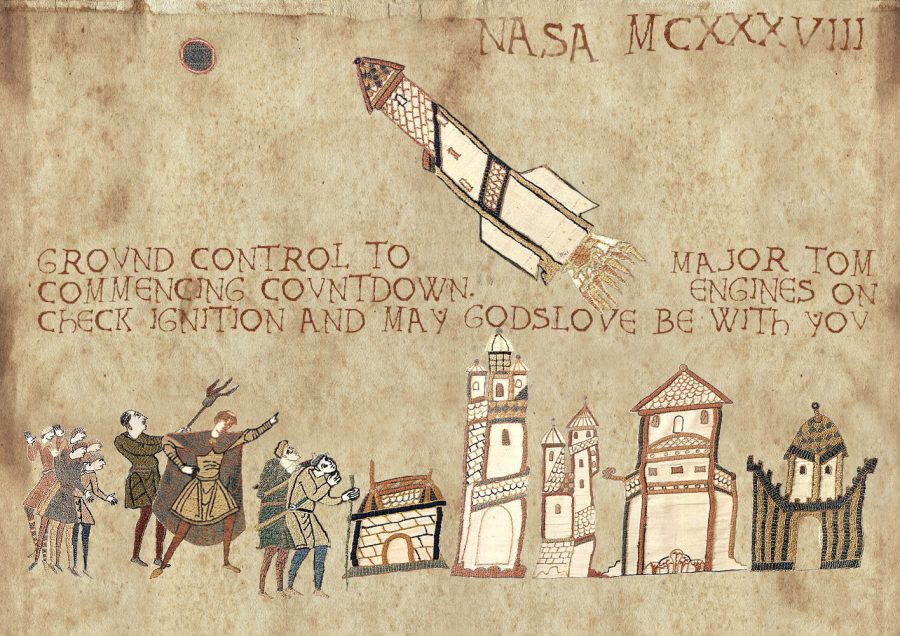
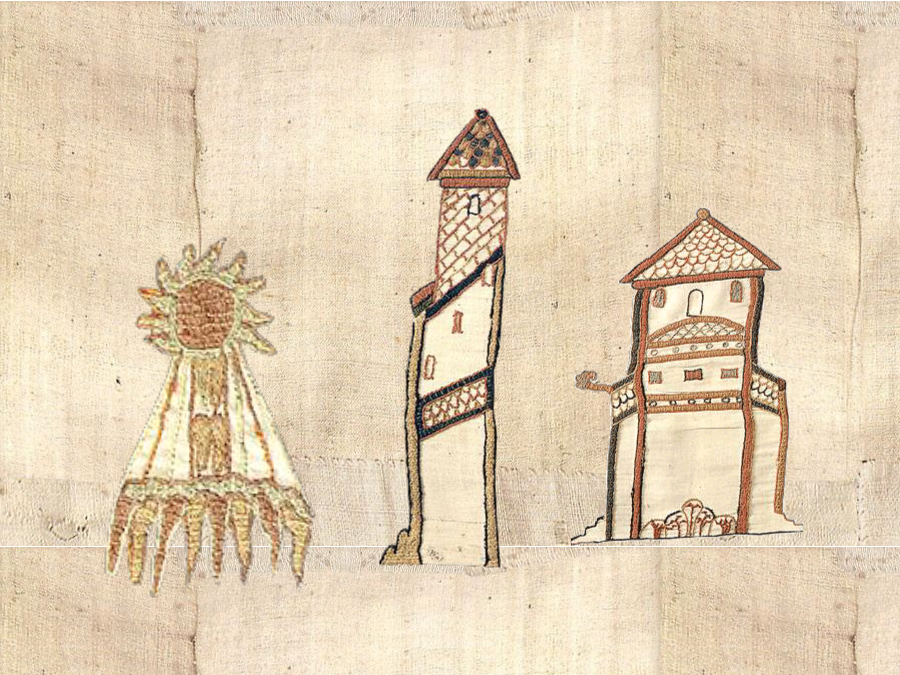
Throw on some Bardcore and begin reworking the Bayeux Tapestry with the Historic Tale Construction Kit here.
If you are interested in something a bit more technical, the designers have put the opensource code on GitHub for your customizing pleasure.
Related Content:
160,000 Pages of Glorious Medieval Manuscripts Digitized: Visit the Bibliotheca Philadelphiensis
Why Knights Fought Snails in Illuminated Medieval Manuscripts
Ayun Halliday is an author, illustrator, theater maker and Chief Primatologist of the East Village Inky zine. Follow her @AyunHalliday.
Construct Your Own Bayeux Tapestry with This Free Online App is a post from: Open Culture. Follow us on Facebook, Twitter, and Google Plus, or get our Daily Email. And don't miss our big collections of Free Online Courses, Free Online Movies, Free eBooks, Free Audio Books, Free Foreign Language Lessons, and MOOCs.
from Open Culture https://ift.tt/2YPeMOx
via Ilumina
Comments
Post a Comment